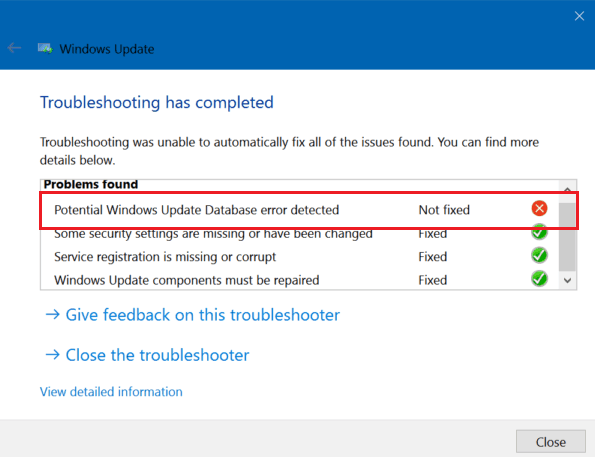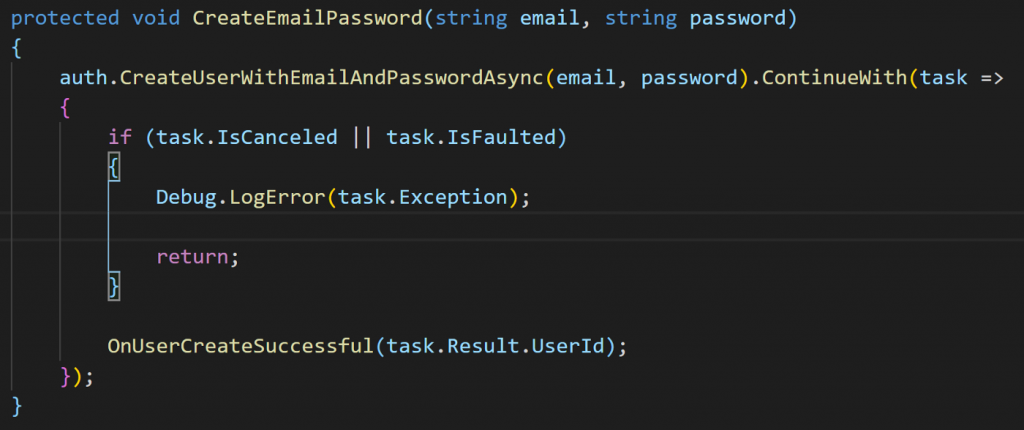

- UPDATEDATABASE COMMAND EF HOW TO
- UPDATEDATABASE COMMAND EF INSTALL
- UPDATEDATABASE COMMAND EF UPDATE
- UPDATEDATABASE COMMAND EF CODE
UPDATEDATABASE COMMAND EF CODE
Now, you can apply the migrations to create a new database and table by executing the following command in the PMC: Update-Database Code language: plaintext ( plaintext )ĮF Core will create the HR database and the following tables: Note that before applying the migration to the database, we need to delete the existing HR database created in the previous tutorial. It’ll display the following SQL code in the Visual Studio Editor: IF OBJECT_ID(N'') IS NULLīEGIN CREATE TABLE (ĬONSTRAINT PRIMARY KEY ()ĬONSTRAINT PRIMARY KEY (),ĬONSTRAINT FOREIGN KEY () REFERENCES ()ĬREATE INDEX ON () We’ll run the Script-Migration command first to preview the generated SQL script: Script-Migration It’s recommended to use the Update-Database command in the development database while using Script-Migration in the production database. Uses parameters to target file names etc.To generate SQL script file only, you use the Script-Migration command: Creates the database if it doesn’t exist.To apply a migration to the database, you use the Update-Database command.

It means that you can manage their versions that are synchronized with the code base.ĮF Core uses the following mapping conventions for naming tables and columns: Note that the files in the Migrations directory can be a part of the source control like git.
UPDATEDATABASE COMMAND EF UPDATE
More specifically, EF Core will use the snapshot file to compare the current state of the models with the previous snapshot and generate the migration scripts to update the database schema accordingly. HRContextModelSnapshot.cs – EF Core will use the snapshot file during the subsequent migrations. If the Up() method creates a table, then the Down() method will drop it.ĮF Core uses the Up() method to apply a migration and the Down() method to reverse it.

The minimal requirement of the Add-Migration command is a migration name.įor example, the following creates a new migration called Initial: Add-Migration Initial Code language: plaintext ( plaintext ) To create a migration, you use the Add-Migration command. To get help on a specific command, you pass that command to the Get-Help command like this: Get-Help commandįor example, you can use the Get-Help command to display the help for the Add-Migration command: get-help add-migration Code language: JavaScript ( javascript ) The Get-Help command shows all the commands available in Entity Framework Core. It’ll show the following output (excerpt): To view all available commands, you execute the following help command in the Package Manager Console (PMC): get-help entityframework Code language: JavaScript ( javascript ) Once having the packaged install, you’re ready to explore the migration commands.
UPDATEDATABASE COMMAND EF INSTALL
Note that before running the migration commands, you need to install the package from NuGet Package. Third, apply the migration to the database to update the database schema.Second, run a migration command to generate a migration file or script based on the model changes.First, create or modify entity models in C#.Typically, you have to do all of these tasks manually by executing SQL commands in the database.įortunately, the EF Core migration feature makes this flow easier by allowing you to make the changes in the models, generate the script based on the changes, and apply them to the database. For example, you may want to create a new table or modify an existing table by adding or removing columns.

In practice, the database schema will evolve with new requirements.
UPDATEDATABASE COMMAND EF HOW TO
Summary: in this tutorial, you’ll learn about how to use the EF Core migrations to synchronize the changes of models to the database.


 0 kommentar(er)
0 kommentar(er)
